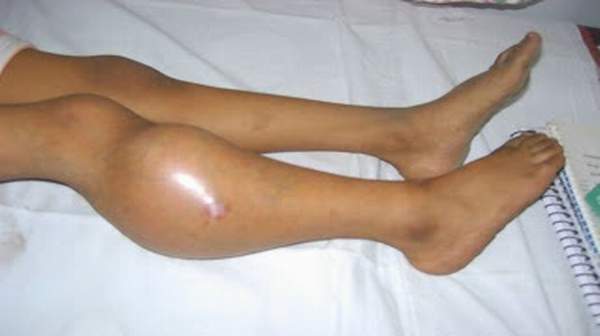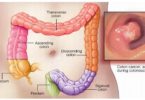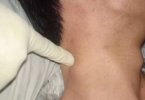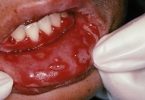What's in this article?
What is Ewing’s sarcoma?
Ewing’s sarcoma is a primary bone cancer that affects mainly children and adolescents. It’s one of a group of cancers known collectively as the Ewing sarcoma family of tumors ESFT or sometimes just EFT. It’s the second most common bone cancer in children, but it’s also relatively uncommon. It accounts for only 1% of all childhood cancers. Although it can occur at any age, it very rarely occurs in adults over the age of 30.
Because many illnesses can cause the same symptoms as Ewing’s sarcoma, it’s sometimes missed in its early stages. But early diagnosis and treatment is important. If found early enough, before it spreads to multiple organs, Ewing’s sarcoma can be treated successfully in 50% to 75% of cases.
Ewing’s sarcoma in children
Ewing’s sarcoma is the second most common primary sarcoma in children and young people. This type of cancer is a bone cancer and most commonly occurs in the long bones, ribs, pelvis and spine (vertebral column).
Fewer than 30 children in the UK develop Ewing’s sarcoma each year. It usually occurs in the teenage years, and is more common in boys.
Although Ewing’s sarcoma is a type of bone cancer, it can also occur very rarely in the soft tissues. This is called extraosseous Ewing’s sarcoma. Another type of Ewing’s sarcoma is a primitive neuroectodermal tumour (PNET). These can be found in either the bone or soft tissue.
Causes of Ewing sarcoma
Ewing sarcoma can occur anytime during childhood and young adulthood. But it usually develops during puberty, when bones are growing rapidly. It is 10 times as common in Caucasian children as in African American, African, and Asian children.
The tumor may start anywhere in the body. Most often, it starts in the long bones of the arms and legs, the pelvis, or the chest. It can also develop in the skull or the flat bones of the trunk.
The tumor often spreads (metastasizes) to the lungs and other bones. At the time of diagnosis, spread is seen in about one-third of children with Ewing sarcoma.
In rare cases, Ewing sarcoma occurs in adults.
Signs and Symptoms of Ewing sarcoma
Because most cases of Ewing sarcoma are in teens and kids older than 10, it often goes unnoticed or misdiagnosed as growing pains (due to its subtle, slow onset) or a sports injury because of similar symptoms.
Pain at the tumor site, as well as swelling or warmth, is common. The pain may be worse during exercise or at night, and a tender lump may form in the affected area a few weeks after pain begins. A tumor in a leg bone may cause a limp. A low-grade fever also can develop.
If cancer has spread, or metastasized, to other areas of the body like the lungs or bone marrow, symptoms may appear there as well. In some cases, the first sign of the disease is a broken arm or leg, which happens because the cancer has weakened the bone and made it vulnerable to a break.
If your child or teen has any of these symptoms, it’s important to see a doctor as soon as possible.
How Ewing’s sarcoma is diagnosed
Usually you begin by seeing your GP, who will examine your child and may arrange tests or x rays. If a sarcoma is suspected, your GP should refer your child directly to a specialist hospital or bone tumour centre. A variety of tests and investigations are needed to diagnose Ewing’s sarcoma, including an x-ray of the painful part of the bone, a chest x-ray and a blood test. A specialist doctor will remove a small piece of the tumour to look at under a microscope (biopsy). Other tests such as a PET scan, a bone marrow biopsy, and an MRI or CT scan may also be done.
Any tests and investigations that your child needs will be explained to you.
Treatment for Ewing’s Sarcoma
For localized Ewing tumor, treatment usually begins with chemotherapy to shrink the tumor before it’s treated with surgery or radiation. Chemotherapy uses anticancer drugs that enter the bloodstream and reach all parts of the body. So in addition to shrinking the main tumor, the chemotherapy is intended to kill cancer cells that may have already spread but have not yet been detected.
Between 8 and 12 weeks after chemotherapy starts, imaging tests are used to determine whether the tumor is able to be removed by surgery. If for some reason surgery can’t be done or if surgery leaves some cancer cells behind, radiation is used to kill the cells. This course of treatment then is usually followed by several more months of chemotherapy to kill any remaining cells.
Chemotherapy is also the first treatment step for metastatic Ewing sarcoma. The regimen, though, is more intense and continues for several months. Then a series of imaging tests is done to see what effect the chemotherapy has had on the main tumor as well as the cancer that has metastasized. The next step is to remove the primary and all known secondary tumors either by surgery, radiation therapy, or a combination of surgery and radiation. Chemotherapy is then resumed for several more months.






